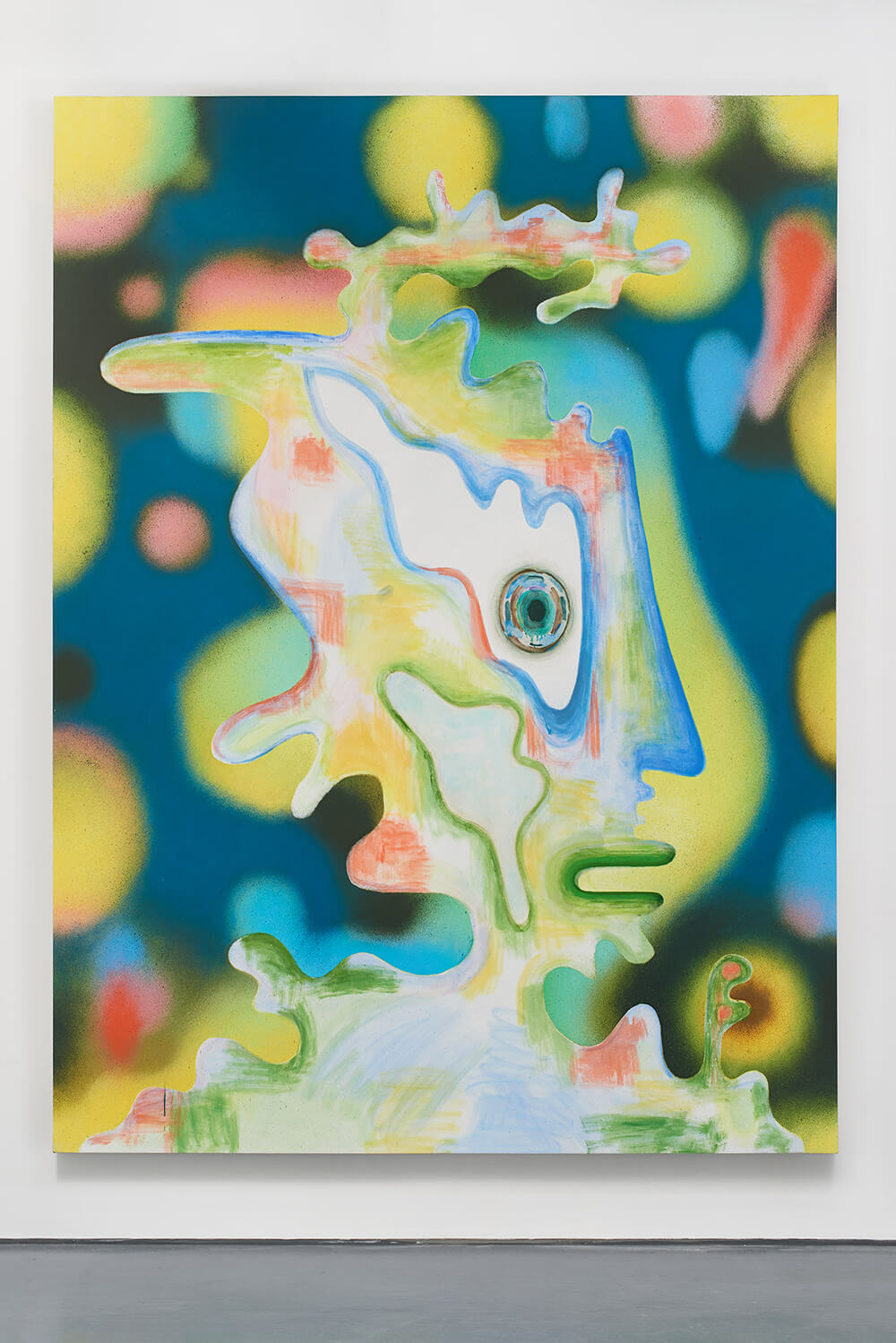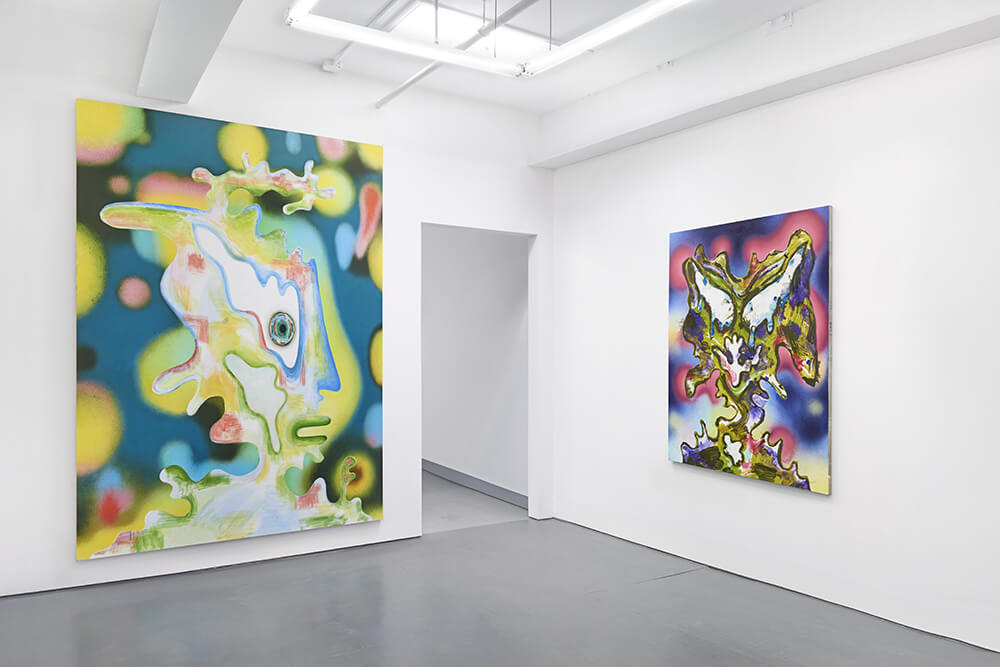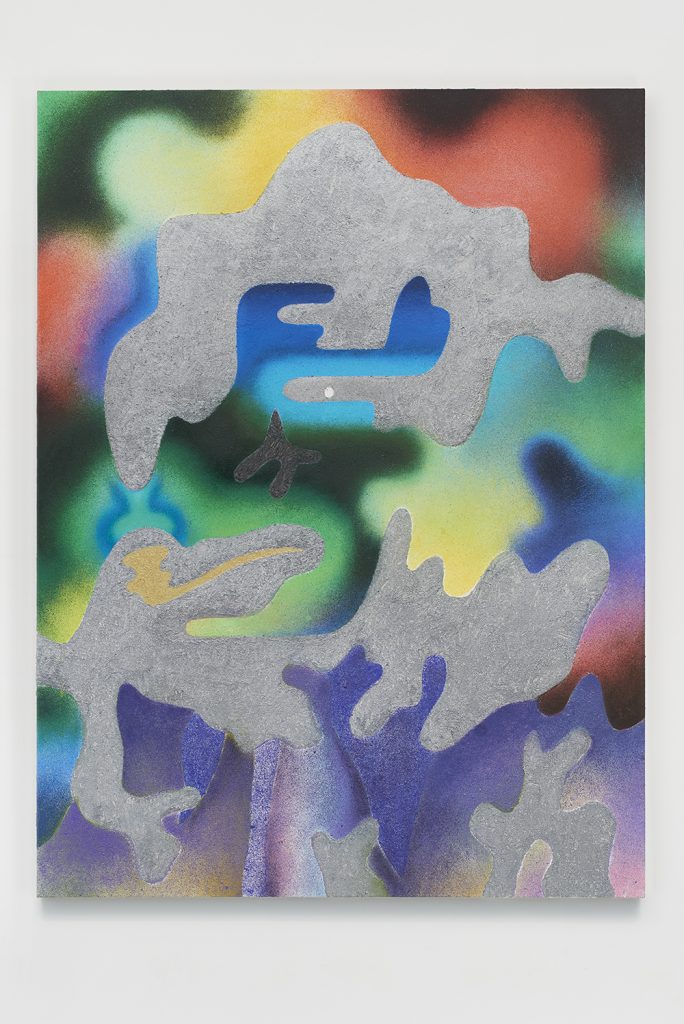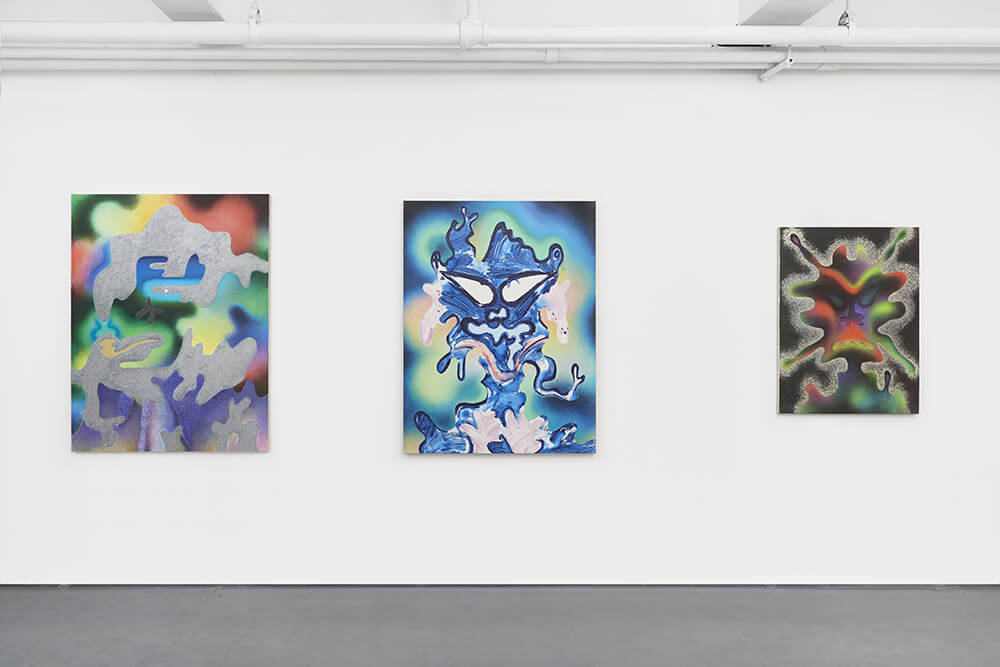Joe Ballweg: Jazz Burger Drool


The first thing you are faced with, as a viewer, when regarding Joe Ballweg’s work is the task of distinguishing field from form. The space of the paintings is unstable and, if you look away, there is the worry that things will have rearranged themselves by the time you look back. This uncertainty is almost absurdly and hilariously stopped short when you come to understand that this floating, chemical slurry contains a downright conventional portrait of a cellular/humanoid figure.
The fields of color that surround the figures are vibrational waves adding to a mood projected by each, and make the viewer feel as if the physical barrier between the interior and exterior of the figure is more of a suggestion than anything—that the primordial soup of the figure’s world is mutating right along with it.
I’m reminded of the idea of a “psychotic realism”, discussed by Donald Kuspit in relation to the work of Lucas Samaras. Namely, that reality itself is more psychotic than we would otherwise understand or believe. I see Ballweg’s work less as a depiction of the monstrous or freakish, and more of a truth within and surrounding each of us. An hour into an album by Sleep, when he’s stopped paying attention to what he’s painting, his id begins to form in the petri dish on the canvas;
it says, “pull my finger”, “this painting sucks”, or “let’s go get Smurf gummies”.
Many artists find common ground in the idea that, while we might begin working on a piece with a certain set of intentions, at some point the work begins to make its own demands. I imagine that Ballweg finds that, as he works, these paintings begin to stare back at him—loose abstract forms congeal within the painting, and suddenly he’s not alone in the studio anymore. Sometimes the visitor is playful, sometimes up to no good, and sometimes to ruin your day, to send you reeling and fretting—“don’t make me go back in there”.
This is the great mystery of the mind: a three-pound mass suspended in cerebrospinal fluid tasked with operating this unwieldy, lumbering, physical system of the body. While the brain itself may not be capable of feeling either pain or pleasure, our body certainly is—and does so whether we like it or not. Ballweg’s work is specifically cerebral to me, and points to the experience of making in the studio and to the experience of contesting with one’s own grey matter as a conscious being. What Ballweg’s work should remind us of, and this feels particularly poignant being that tonight is Halloween, is that we all deal with very mischievous interior worlds. In some ways, the isolation we face in dealing with our minds is one of the particular things we all have in common.
I met Joe at his studio in Ridgewood to ask him a few questions about his work and he tried to give me a lobotomy. Just kidding.

I think a lot of the time about the fact that there are internal monologues and worlds going on as we move through real space with each other—it seems like it makes this strange “reality” split. Do you think about “the real” and do you find situations where something imagined or something potential can feel real?
Yeah. I think about “the real”. It’s an impossible subject, one that no one is ever going to find a satisfactory explanation, but to me it’s so exciting to just think about it. Let me start by saying, it’s a topic that is easier for me to talk about through science than the poetry of art. I mean if you want to know how I feel about the nature of reality you can look at my paintings, but if you want to have a discussion about it, I feel more comfortable talking about quantum physics or something like that. That said I’m a complete novice when it comes to these fields of science. I just like enjoying the incredible depth of knowledge that’s been achieved, without being bothered with all the hard work. What I can say regarding thinking about “the real” or the nature of reality in relation to my art is that it has helped me become less reliant on my thoughts or seemingly smart ideas. It lets me recognize that I’m a minor participant in an incredible reality that for the most part remains hidden
behind a curtain. All I need to do is participate as best as I can, and things are just fine! The one limit I would put on this line of thought is that as artists, we usually like to have something in the end to look at, and I feel a responsibility to make that experience interesting. This is a good thing I think. It keeps us together in this adventure, looking at art, disagreeing, and trying something different in the hopes of scratching an elusive itch. Otherwise, we might all be living alone in huts in the forest.

To what extent are the figures in your paintings either clearly defined characters of your psyche or results of the process of the studio? In other words, do you begin a painting with a figure or character in mind and seek to flesh that mental influence out, or do you begin with abstract form and find the character from a more process-based approach?
The figures start out as small drawings that contain a drop of something I recognize or maybe a particular attitude. I make more drawings and start painting the image, and eventually the work reaches a state where that initial quality that inspired the work is fully visible. It’s safe to say, I’m not interested in illustrating my psyche, but the subject matter is there and right now I enjoy it. I suppose it’s a way for me to engage ideas about the collective unconscious, and at the same time be a little ridiculous. Overly serious art seems too foreign to my feelings about things.

Have there been figures that have wormed their way into your psyche, that you think about outside of the studio? Or have there been particularly strong characters for you who you have revisited in paintings? (I say “characters” because to me, the figures are all actively projecting mood of some sort)
In general, I don’t think this happens. I think any psychological connection I have to the figures was there all along and it simply found its form. Once the painting is done I set it to sail, and I usually feel at peace with it. I would also say that I really don’t think of the paintings as portraits of figures. The figures are obviously there and the format of the classic portrait is often followed, but when I think of a particular painting of mine I think of the painting, not the figure. I feel a connection with how the forms in the space co-exist with the environment and I think having a figure present is one way of clearing a path into that mystic world. The depicted characters don’t have a hold on me but the images do.

I know you make many drawings as well as making paintings. Can you talk about how the drawings function in regard to your practice in general, and can you talk about the difference you perceive between the act of making a drawing and the act of making the paintings?
Every painting starts with a drawing; usually very small and done in an off-hand way. I would say they feel direct and unfiltered. My drawings deal mostly with contour lines and two-dimensional space, while the paintings involve more variables such as color, illusionistic space, and materiality. I guess my relationship between drawing and painting is not so unique – oh well! I would also say that I need both activities. For me, drawing is like a newly hatched chick and painting is more like a stray dog.

Finally, the idea of “collective unconscious” is a fundamentally optimistic one. Do you consider your works to be optimistic?
It would be nice to say yes to this question, but I think that would be wrong. I think I would rather describe my work as realistic. What I mean is when you start to recognize how bizarre being alive is ideas about optimism and pessimism fall away.
They seem irrelevant and maybe not even in the realm of art. Don’t be optimistic or pessimistic! Be alive! Art that embraces the good, the bad, the frenzied and the absurd is where it’s at.











Responses